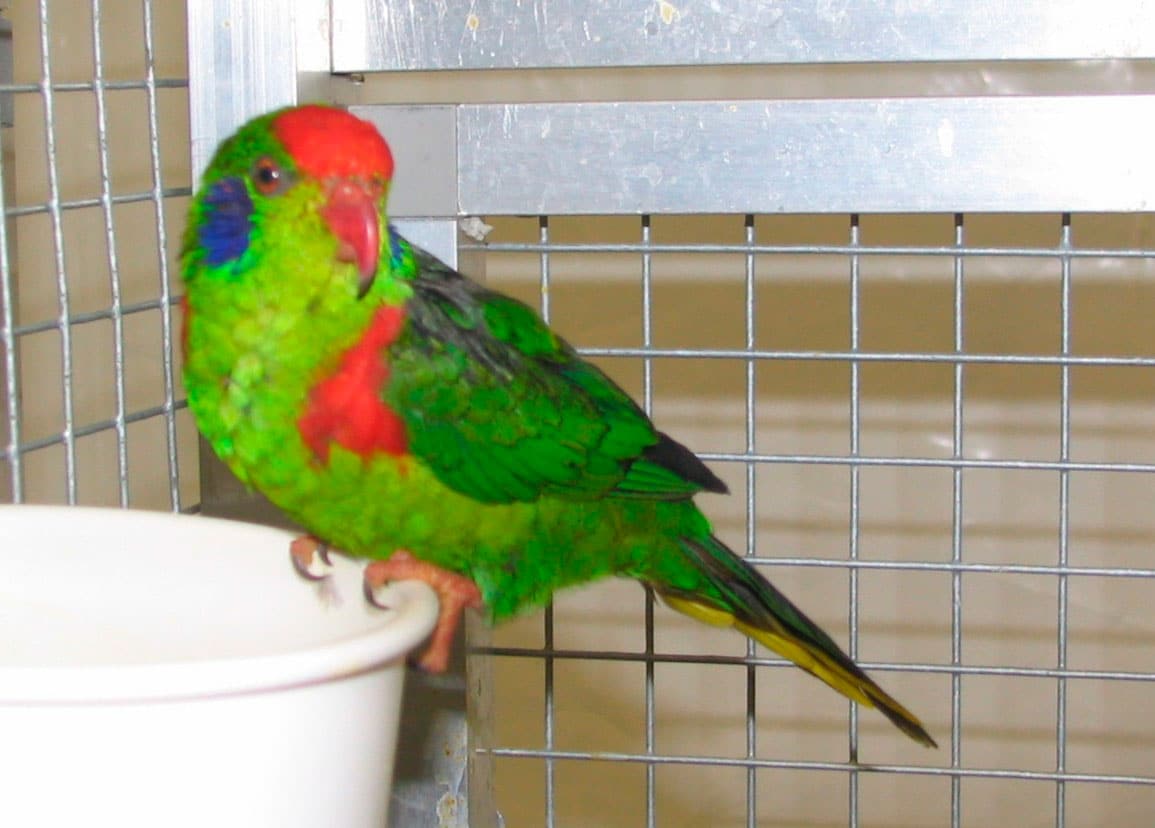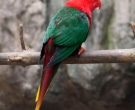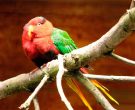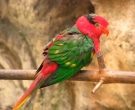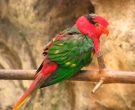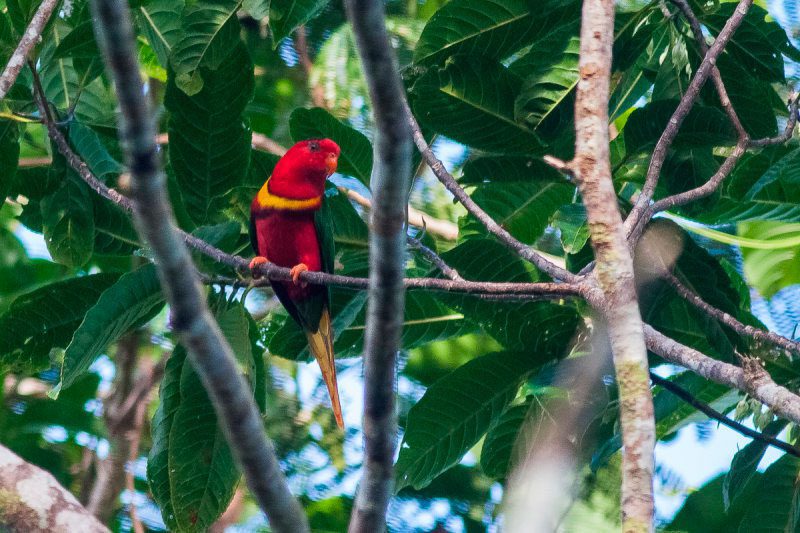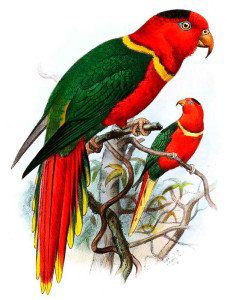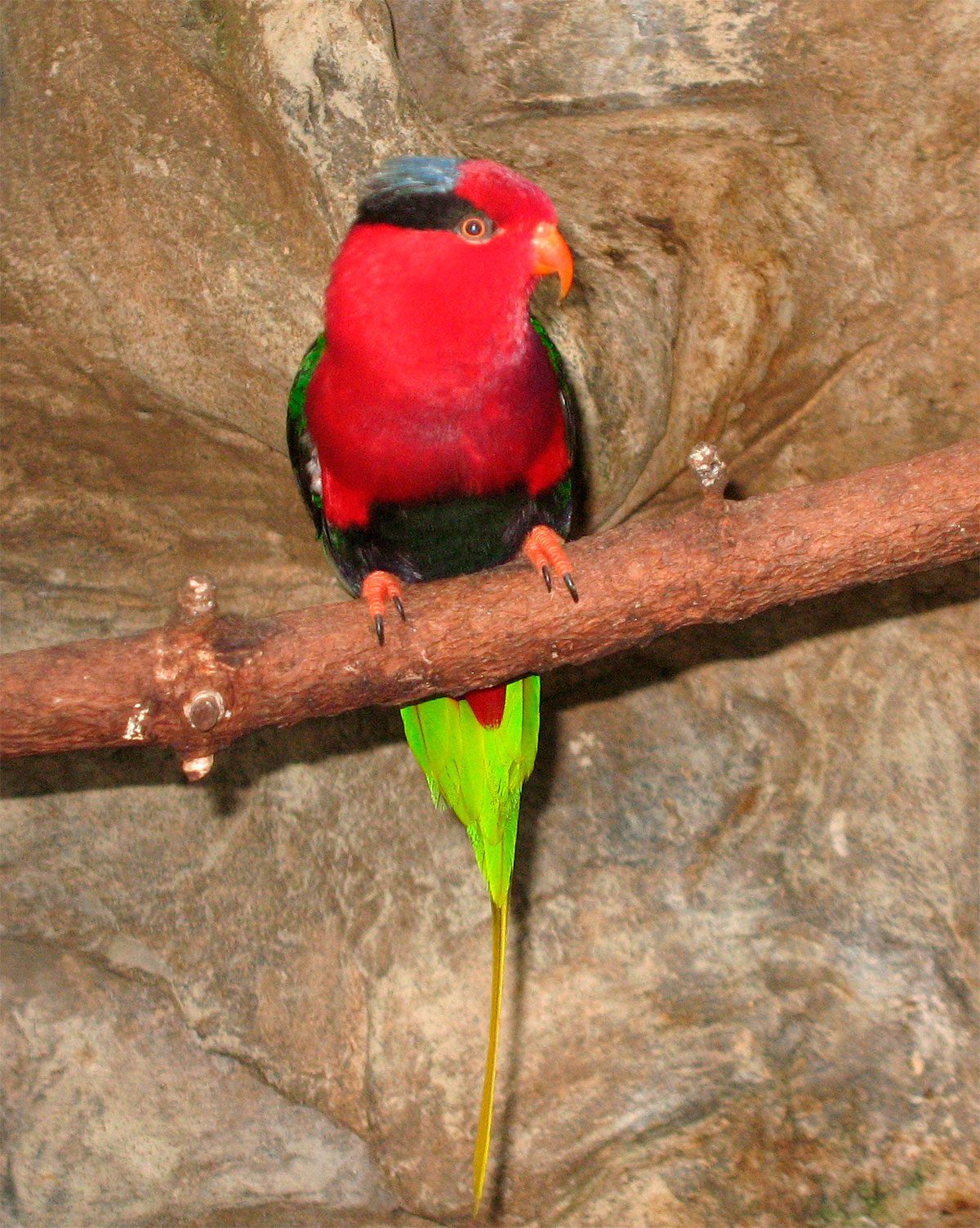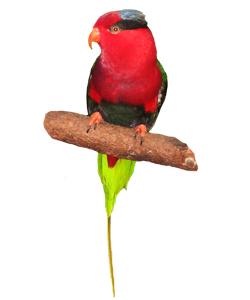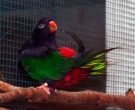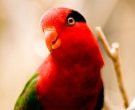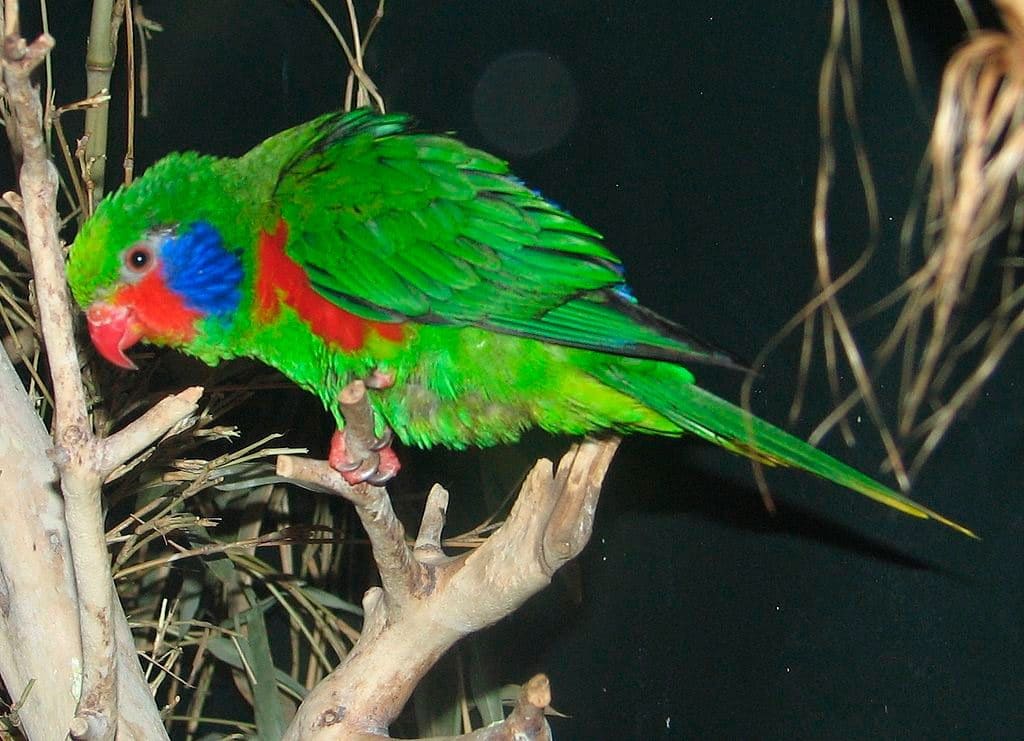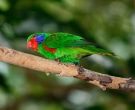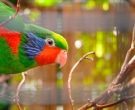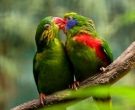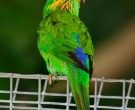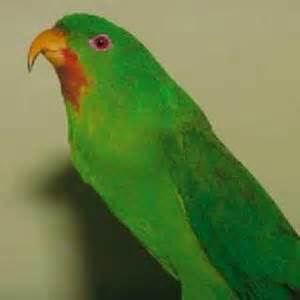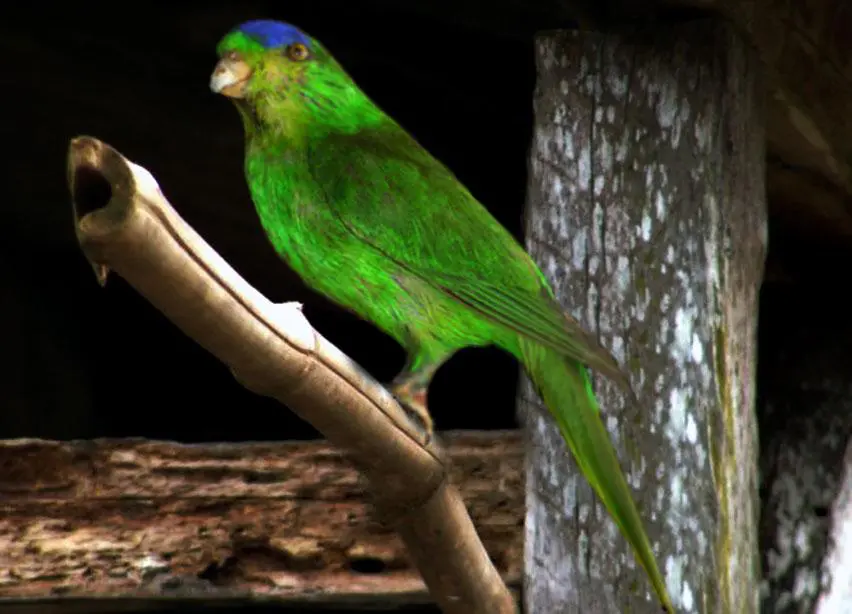Content |
|---|
Description
17 cm.. length and a weight between 30 and 35 g..
The front of the crown of the Red-fronted Lorikeet (Charmosyna rubronotata) is red; rest of the crown green; chin, the throat and headphones coverts, yellowish green with a prominent patch purple-blue in the center of the ear coverts. Upperparts green; lower part of the rump and tail coverts, matte red. Wings Green with a bit of yellow in the curve. Under, the wings red; flight feather blackish brown with a yellow stripe in the Center. The underparts yellowish green with prominent red blotch on the upper side of the chest; the thighs green. The tail above blackish brown with green piping; below, the tail Brown with wide yellow tips (except central pair) and Red covered in the base. The bill Red pink; cere pinkish; irises brown; legs Pink.
females lack of red color in the crown, in the marks of the chest and at the bottom of the wings (that are greenish yellow). ear patch It is replaced by streaks of greenish-yellow.
- Sound of the Red-fronted Lorikeet.
Description 2 subspecies
-
Charmosyna rubronotata kordoana
(Meyer,AB, 1874) – Female is similar to the nominal. The male has the patch of the crown paler, extensive and blue; minus purple blue ear-coverts.
-
Charmosyna rubronotata rubronotata
(Wallace, 1862) – Nominal.
Habitat:
It inhabits in the humid forests, edges of forests and plantations of coconut, Once in a while visit the trees and shrubs in open field. Are from the lowlands up to the 850 m. Usually found in small flocks of up to 10 birds flying over dense forest, or feeding on flowers in the canopy, sometimes with other parrots. Habits are similar to the of the Red-flanked Lorikeet.
Reproduction:
Nesting and breeding habits not described.
Food:
Feeds of pollen, nectar, flowers and seeds.
Distribution:
Size of the area of distribution (reproduction / resident): 417.000 km2
New Guinea in West Papua New (Indonesian) and Papua New Guinea. The range goes from East of Vogel-kop through Maprik, the lower reaches of the rivers Sepik and Ramu reaching Astrolabe Bay in the East. Also in Salawati in the islands of the West of papua and in Biak. The Red-fronted Lorikeet It is irregularly distributed throughout its area of distribution, but may be locally common in some areas. It seems to be less common than the Red-flanked Lorikeet, He replaced at higher altitudes, where the two species overlap.
Description 2 subspecies
-
Charmosyna rubronotata kordoana
(Meyer,AB, 1874) – Isla de Biak
-
Charmosyna rubronotata rubronotata
(Wallace, 1862) – Nominal. Island of Salawati and Northwest of New Guinea (Doberai Peninsula to mountains of Adelbert
Conservation:
• Current IUCN Red List category: Least concern.
• Population trend: Stable.
The trend of the population seems to be stable, and therefore, the species does not approach the thresholds for Vulnerable according to the population trend criteria.
The world population It has not been quantified, It is believed that it is by the 100.000 specimens and stable.
The species is described as common to local scale.
"Red-fronted Lorikeet" in captivity:
There is no data on its breeding in captivity..
Alternative names:
– Red-fronted Lorikeet, Red fronted Lorikeet, Red-fronted Blue-eared Lorikeet, Red-fronted Blue-eared Lory, Red-spotted Blue-eared Lorikeet, Red-spotted Lorikeet (ingles).
– Lori à front rouge, Lori de Wallace, Loriquet à croupion rouge (French).
– Rotstirnlori (German).
– Lori de Frente Roja, Lori Frentirrojo (español).
scientific classification:

– Order: Psittaciformes
– Family: Psittaculidae
– Scientific name: Charmosyna rubronotata
– Citation: (Wallace, 1862)
– Protonimo: Coriphilus rubronotatus
Images “Red-fronted Lorikeet”:
————————————————————————————————
“Red-fronted Lorikeet” (Charmosyna rubronotata)
Sources:
– Avibase
– Parrots of the World – Forshaw Joseph M
– Parrots A Guide to the Parrots of the World – Tony Juniper & Mike Parr
– Birdlife
– Photos:
1 – Author iggino – lynx
2 – Charmosyna rubronotata kordoana by Biodiversity Heritage Library
– Sounds: Katerina Sam (Tvardikova) – (Xeno-canto)
